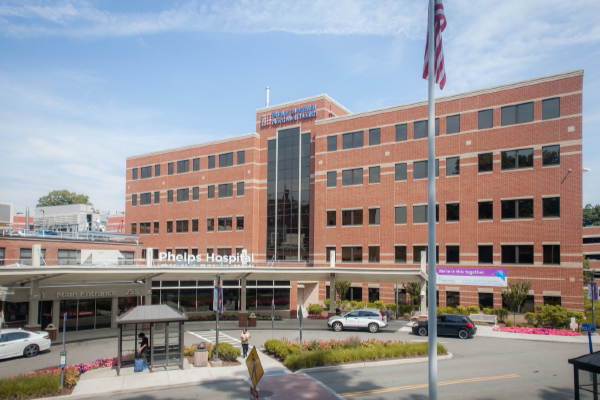A regional return to some degree of pre-pandemic normalcy was the focus of the Bridgeport Regional Business Council”™s May 17 webinar “Employer”™s Guide to Covid-19 Vaccines and Returning to Work.”
Dr. Greg Buller, chairman of Bridgeport Hospital”™s Department of Medicine, stressed that the vaccines being administered are “all incredibly safe” and that one had a higher risk of being struck by lightning than by having a severe reaction to the vaccines. The Johnson & Johnson vaccine, he added, was paused “because of a relatively novel side effect that is very, very, very uncommon, and to my knowledge has not yet been described in the state of Connecticut.”
Dr. Jurate Ivanaviciene, infectious disease specialist at Hartford HealthCare”™s St. Vincent”™s Hospital in Bridgeport, said that people who have been vaccinated do not need to continue in a quarantined state. For those who have yet to be vaccinated and believe they were exposed to someone who had Covid, however, she recommended erring on the side of caution.
 “You should get tested and you should quarantine,” she said. “I would say day five after your exposure and going forward, if your result is negative and you”™re asymptomatic, you can return to work. You should still continue to monitor your symptoms, even if you have that negative result.”
“You should get tested and you should quarantine,” she said. “I would say day five after your exposure and going forward, if your result is negative and you”™re asymptomatic, you can return to work. You should still continue to monitor your symptoms, even if you have that negative result.”
Ivanaviciene reported that nonvaccinated people who have been exposed to a Covid positive person usually develop symptoms between four and 14 days, adding that some people have been known to continue to have symptoms past 20 days.
But if an entire workplace has been vaccinated, Ivanaviciene continued, there is no need to continue wearing face masks ”” but that is predicated on everyone in the workplace being honest about their vaccination status.
“The tricky part is if you don”™t know if everybody”™s vaccinated,” she said. “Is it possible that someone may be asymptomatic in the office who is not wearing a mask and could increase the possibility of the spread? It”™s always the possibility.”
Ebony Jackson-Shaheed, epidemiologist and Bridgeport”™s acting director of health, said that the city does not distribute vaccines to providers, but relies on the state government for its”™ vaccine services. The challenge for the city, she said, was spreading the word on the availability and safety of the vaccines.
“We have signs literally everywhere,” she said. “A lot of individuals that come into the clinics to get vaccinated say that they learned about the vaccine through a lot of our signs.”
Jackson-Shaheed noted the city has also tapped into Spanish-language stations and local-access television channels to spread the word on the vaccination availability. To accommodate residents who are unable to travel to the clinics, she added, mobile clinics have gone door-to-door in parts of the city where the lack of transportation access is particularly acute.
“Even for those who have no documentation, we take them as walk-ins,” she said. “If they don”™t have any identification, they sign an attestation saying they are who they are, and then they go ahead and they get vaccinated.”
Ramon Peralta, CEO of Peralta Design in Shelton, told the webinar that seven members of his 10-person company were in the office, with the other three still working remotely. The company installed Plexiglas panels to separate workspaces and still requires face masks in the common areas of the office.
“I”™ve said, ”˜Hey guys, we can have staff meetings and if you”™re vaccinated, you don”™t need to wear a mask,”™” he said. “But we have a mix ”” we”™re probably at 70% vaccinated right now.”
Peralta admitted asking visiting clients if they are vaccinated before they enter, and to date all clients have already received their vaccines.
“A lot of it is optics,” he said. “If no one was there, I”™d probably be comfortable with having somebody come in without a mask. But I have to be aware as the owner and as the leader that everyone should feel safe at work.”
Gary Phelan, attorney with the law firm Mitchell & Sheahan, told the webinar audience that employers can mandate that employees receive vaccines, with several key exceptions.
“The first is if a person with a disability and who, for whatever reason, is not able to get the vaccine,” he said. “Then you focus the person and how you can accommodate them. The second exception is for people with sincerely held religious beliefs who, therefore, will not get the vaccine. Again, the question is whether there”™s an accommodation and would it lead to an undue hardship.
“The third caveat,” he continued, “is for unionized workplaces” ”” something that”™s subject to collective bargaining.
Phelan warned that that employers cannot determine certain workers must be vaccinated and others can take a pass.
“For example,” he explained, “if an employer says, ”˜Older employees are more at risk and should get the vaccine,”™ that would be age discrimination.”
Phelan observed that the federal Occupational Safety and Health Administration recently issued guidance that “workplaces should not distinguish between workers who are vaccinated and not vaccinated. So, that”™s the guidance we have to respect in regard to the workplace.”





















